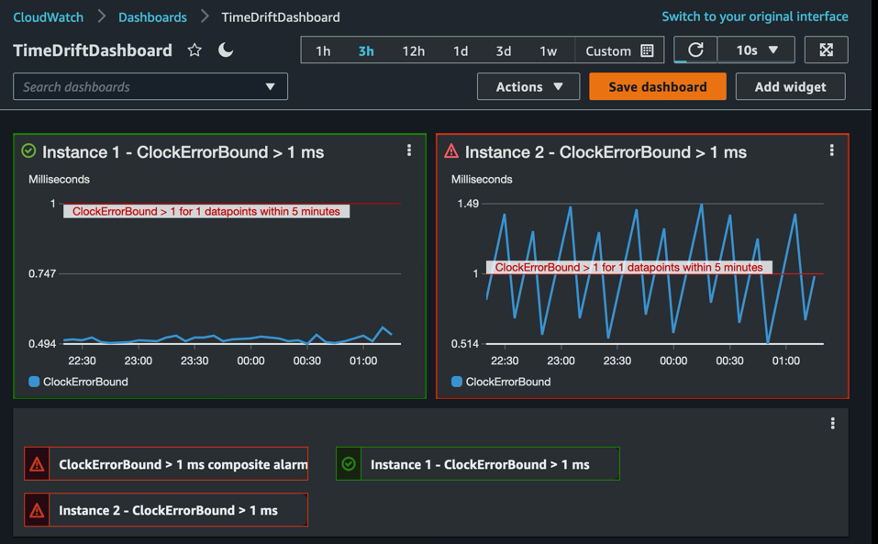AWS Cloud Operations & Migrations Blog
Category: Intermediate (200)
Using AWS Service Catalog and the AWS Service Management Connector for ServiceNow to deliver infrastructure in AMS-governed environments
AWS Managed Services (AMS) operates AWS on your behalf, providing a secure and compliant , a proven enterprise operating model, ongoing cost optimization, and day-to-day infrastructure management. AMS provides a secure and efficient means to make controlled changes to your infrastructure to ensure compliance. Changes are approved and automated through its approval engine. You can […]
AWS Health Aware – Customize AWS Health Alerts for Organizational and Personal AWS Accounts
AWS strives for high availability and has a 99.9% uptime for most services. However, in the rare event that incidents do occur, customers should be prepared to respond. AWS Health is the primary channel to communicate service degradation, scheduled changes, and resource impacting issues. For customers running critical applications, having access to proactive and real-time […]
Troubleshoot and resolve Windows workload issues using AWS Systems Manager Fleet Manager
If you’re a cloud operations engineer, you have the financial and operational responsibility to implement a monitoring, tracking, and resolution process to keep a fleet of EC2 instances healthy while staying within budget. In this blog post, I show how you can quickly detect, track, troubleshoot, and resolve operational issues at scale with Amazon CloudWatch, […]
Introducing the AWS AppConfig Python Helper Library
AWS AppConfig enables you to manage and quickly deploy application configurations without doing time-consuming code deployments. With AWS AppConfig, you can create an application configuration, validate it to make sure it is free of syntax or semantic errors, and deploy it to your targets at a controlled rate at runtime. If AWS AppConfig encounters errors […]
Standardizing Database Migrations with AWS Database Migration Service and AWS Service Catalog
Companies and organizations are moving data and technology infrastructure to AWS to modernize their applications and gain access to cloud services. The move results in lower costs, increased productivity, and reduced downtime. Some customers are migrating data to Amazon Simple Storage Service (Amazon S3) to take advantage of AWS AI and ML services, while others […]
Using Amazon CloudWatch Synthetics to find broken links on your website
Most businesses and professionals build and maintain websites to bring visibility and credibility to their work. These websites often act as a medium for messaging. They shape the online perception of the business. When links on a website are broken, users get frustrated. If they cannot access the information they need, they might take their […]
Using environment variables with Amazon CloudWatch Synthetics
With the increase in online traffic, organizations have prioritized the continuous monitoring of their applications so that they can detect issues before they cause widespread problems. Canaries emulate a user flow, making it possible for organizations to proactively catch errors thereby ensuring a good customer experience. Amazon CloudWatch Synthetics allows you to create canaries to […]
Understanding the differences between configuration history and configuration snapshot files in AWS Config
September 8, 2021: Amazon Elasticsearch Service has been renamed to Amazon OpenSearch Service. See details. When you run your applications on AWS, you often use AWS resources, which you must create and manage collectively. As the demand for your application keeps growing, so does your need to keep track of your AWS resources. AWS Config tracks […]
Manage Amazon EC2 instance clock accuracy using Amazon Time Sync Service and Amazon CloudWatch – Part 2
In part 1 of this series, I cover important concepts about measuring the accuracy of time on Amazon EC2 instances . I discussed calculating ClockErrorBound (?) and using its value as a range between which system time is accurate. In this part, I walk through the process of using Amazon CloudWatch to measure and monitor […]
Manage Amazon EC2 instance clock accuracy using Amazon Time Sync Service and Amazon CloudWatch – Part 1
This two-part series discusses the measurement and management of time accuracy on Amazon EC2 instances. Part 1 covers the important concepts related to system and reference time. Part 2 covers the mechanism of measure, monitor, and maintain accurate system time on EC2 instances. A large and diverse set of customer workloads depends on the observed […]








